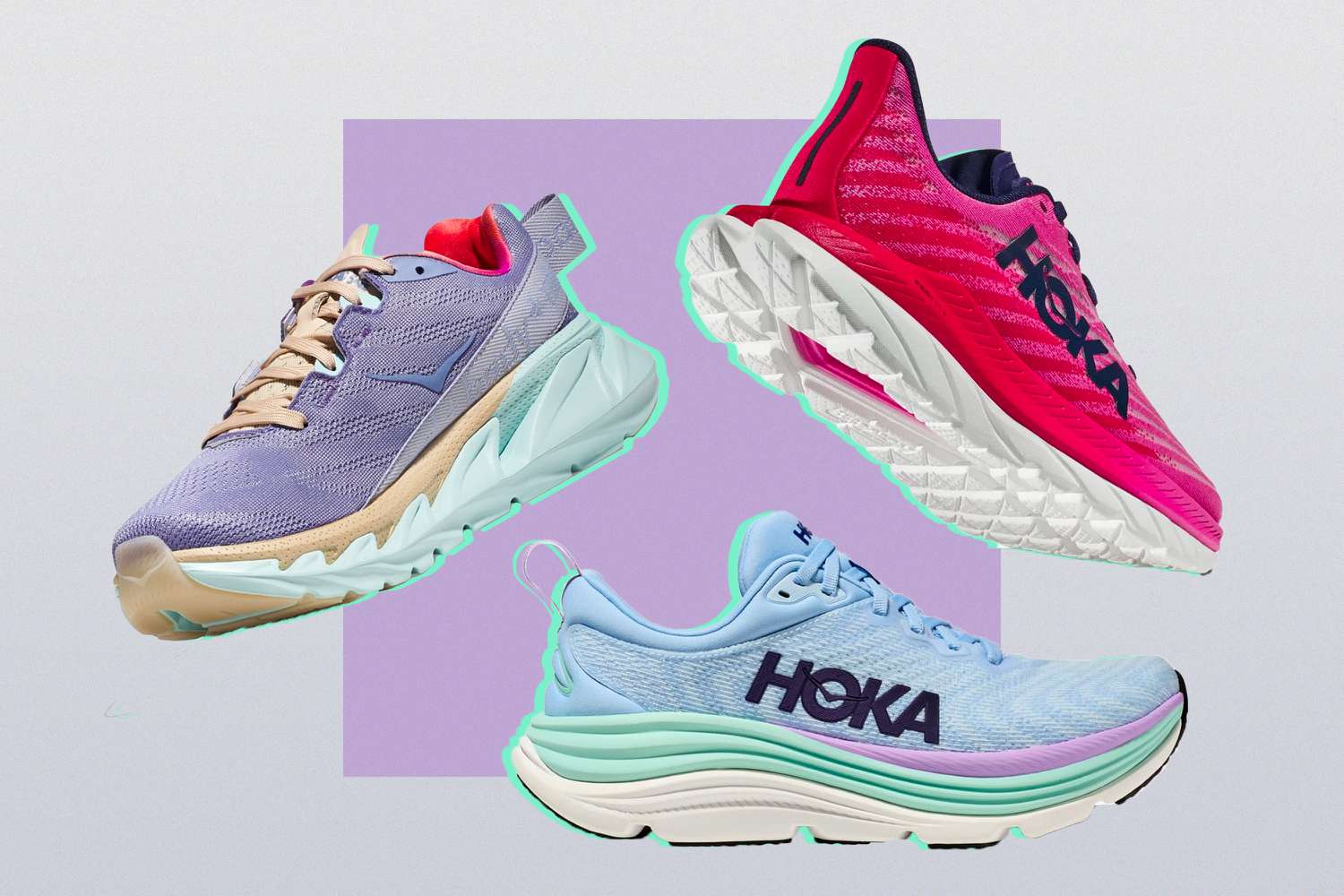Thinking of Buying Hoka Shoes? Find Out if They Are Worth the Investment

Hoka shoes have been taking the running world by storm in recent years. With their oversized soles and marshmallow-like cushioning, Hokas have become a favorite among runners of all levels. But what is all the hype about Hokas? And are they really the right shoes for everyone?
To get to the bottom of the Hoka hype, we've asked a few experts to weigh in with their unfiltered thoughts on Hoka shoes. If you're curious about trying out a pair but aren't sure they're worth dropping $200 to find out, this article is for you.
Hoka shoes are strategically designed to support a wide variety of activity levels. Every pair has a curved 'meta-rocker' in its sole, designed to propel you forward comfortably. This unique, first-of-its-kind design makes it feel like you're walking (or running) on literal air, one of many reasons why both avid and novice fitness enthusiasts have gravitated toward the shoe. 'Hoka's Innovative rocker type design makes me feel fast on my feet, and the motion overall feels natural,' says hiking coach and outdoor travel expert Adrian Todd, founder of Great Minds Think Hike.
HOKA shoes also feature a cushioned midsole that acts as a high shock absorber without weighing down the shoe. The active foot frame cradles the foot and secures the heel as you walk. If you're someone who spends hours on your feet, all of Hoka's unique attributes go a long way in helping fight foot fatigue. '[Hokas] are my go-to for when I know I'll be on my feet training clients and teaching classes for hours on end,' says Izzi Lynn, fitness instructor at Barry's in New York City. 'They have a generous toe box, and while I don’t have wide feet, I think having space around my toes just adds to my comfort.'
Hoka's incredibly supportive design makes it an ideal shoe for long-distance walking and running. 'I highly recommend Hoka for those looking to run, jog or walk for distance as they are extremely light for the amount of cushion and support that they provide,' says chiropractor Matt Tanneberg, CSCS. However, Tannenberg recommends wearing Hokas only for walking and running. 'They should not be worn for any kind of strength training or weight lifting as they are very high platform in comparison to training or lifting shoes,' he says. 'I also do not recommend them for any kind of recreational sport for the same reason as lifting, the high platform.'
It depends on your needs and preferences. 'I think Hokas are an excellent choice for people who wear inserts (because of the extra space in the toe area) or who prefer a more cushioned stride,' says Lynn. 'If you’re not a runner and you’re looking for a shoe for daily wear, I think they’re a great option with lots of color choices to match your vibe!'
However, some experts have a more critical view. 'For daily walking, everyday use, or even more technical trail runs, I do not believe Hoka is an optimal shoe,' says Todd, who prefers a more minimalist shoe for everyday wear. 'Minimalist shoes help keep our feet strong and are better for proprioception or functional balance,' says Todd. 'I also believe the older you get, the more crucial it is to be centered, so unfortunately, I do not think seniors should be wearing Hoka's or maximalist-type shoes all day.'
Hoka shoes are labeled for their recommended activities, whether you're looking for your next shoe for a big race, everyday running, or comfort and leisure activities. The best way to start finding the right Hoka for your feet is to sort by the activity you plan to wear them for, then spend some time choosing your favorite style and color.
Hoka shoes tend to run true to size and are available in normal and wide sizing. If you're stressed out about choosing the wrong shoe, there's a silver lining. 'Shoes are a totally subjective experience, so if you do decide to hop on the Hoka train and they don't work, Hoka offers a 30-day return window regardless of miles logged,' says Lynn.




